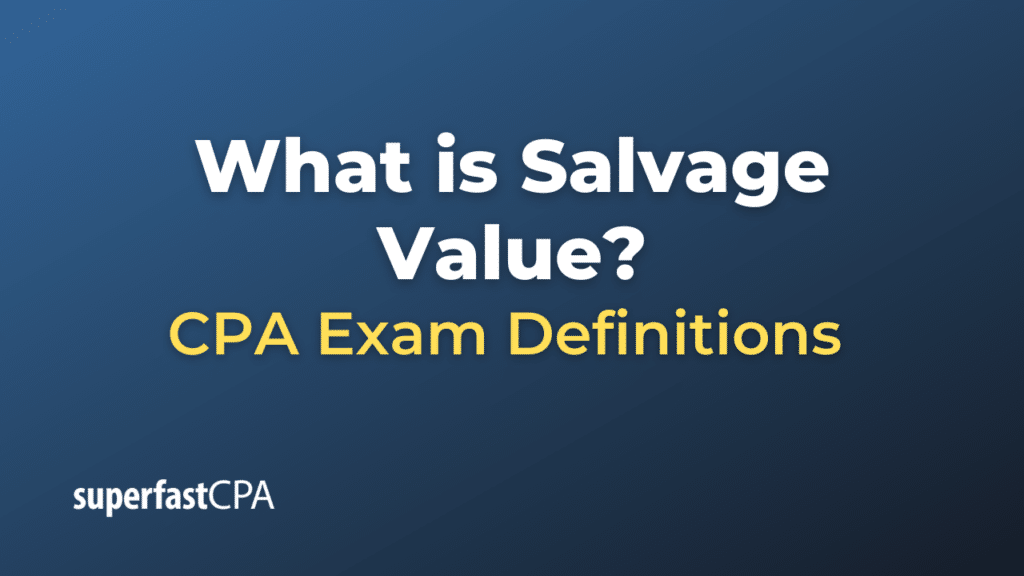Salvage Value
Salvage value, also known as residual value or scrap value, refers to the estimated value of an asset at the end of its useful life. In other words, it’s the amount you expect to receive when selling or disposing of the asset after it’s no longer being used for its primary purpose. The concept of salvage value is frequently used in depreciation calculations, especially when determining the depreciation expense for assets using methods like straight-line depreciation.
Key Points:
- Not Always a Sale: Even though it’s termed “value,” it doesn’t always mean the asset will be sold. In some cases, the asset might be dismantled, and parts could be used elsewhere, or it might simply be discarded.
- Estimation: Salvage value is an estimate. It’s a prediction of what the asset will be worth at the end of its useful life, which can be several years in the future.
- Impact on Depreciation: The salvage value is deducted from the cost of the asset to determine the total amount that should be depreciated over the asset’s useful life.
- Tax Implications: Tax regulations and accounting standards in different jurisdictions may have specific rules or guidance on how to determine and treat salvage value.
Formula for Straight-Line Depreciation:
Annual Depreciation Expense= Cost of Asset − Salvage Value / Useful Life in Years
Example of Salvage Value
Imagine you buy a car for personal use, and you pay $20,000 for it. After doing some research and based on the car’s make, model, and the rate at which similar cars depreciate, you estimate that after using the car for 5 years, you’ll probably be able to sell it for $5,000. That estimated amount, $5,000, is the car’s salvage value.
Let’s say you want to calculate the annual depreciation of the car using the straight-line method:
- Determine the depreciable amount:
Depreciable Amount = Original Cost – Salvage Value
Depreciable Amount = $20,000 – $5,000
Depreciable Amount = $15,000 - Determine the annual depreciation:
Annual Depreciation = Depreciable Amount / Useful Life
Annual Depreciation = $15,000 / 5 years
Annual Depreciation = $3,000 per year
This means, from an accounting perspective, the value of the car decreases by $3,000 each year. At the end of 5 years, its book value will be the salvage value, which is $5,000.
In this example, even though the car was purchased for $20,000, it loses value over time due to wear and tear, changes in market demand, technological advancements, and other factors. However, it doesn’t become worthless; it still retains a salvage value of $5,000 after 5 years, which is what you expect you could get if you were to sell it at that time.













